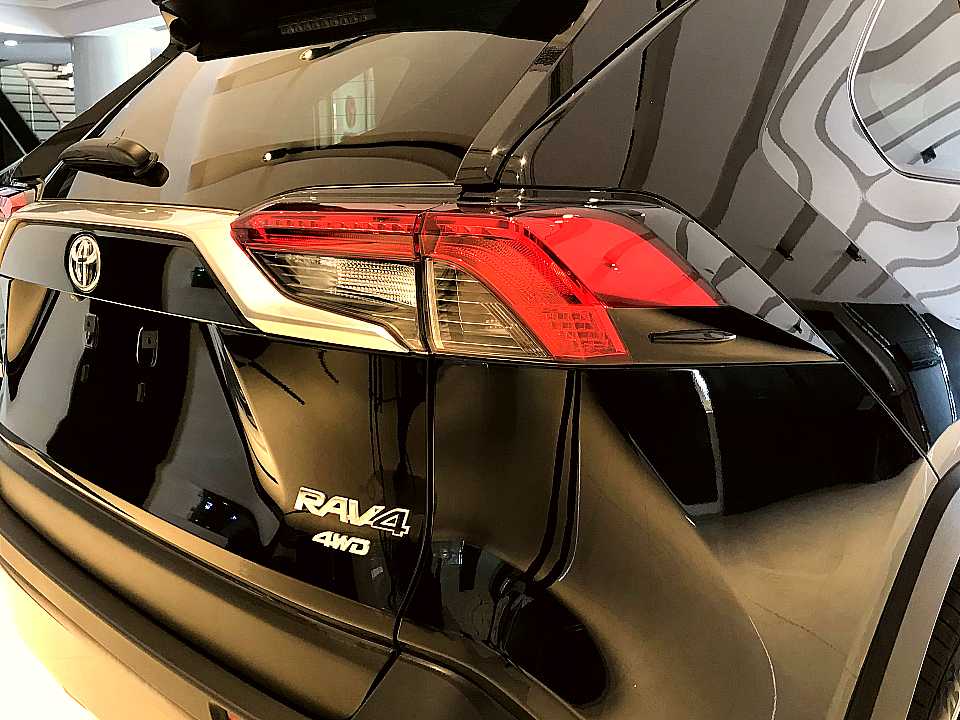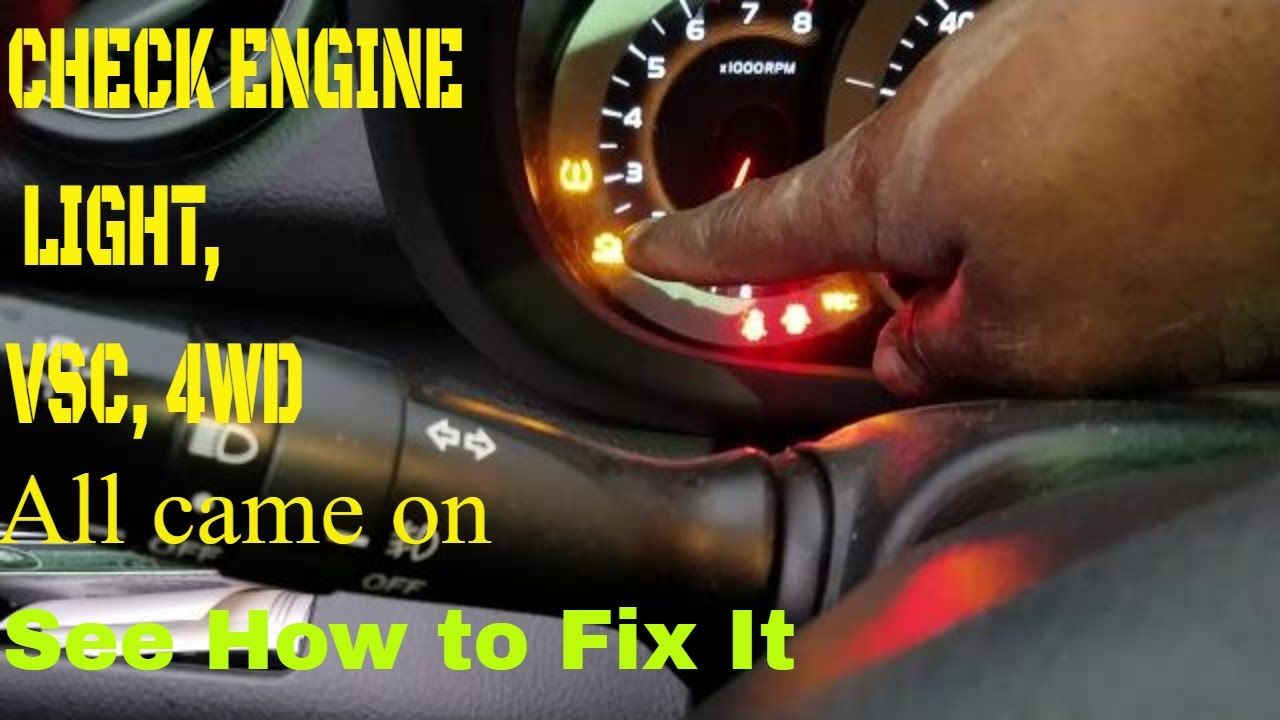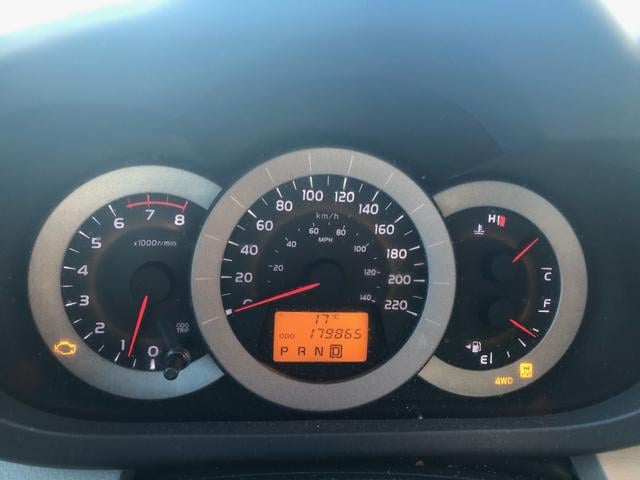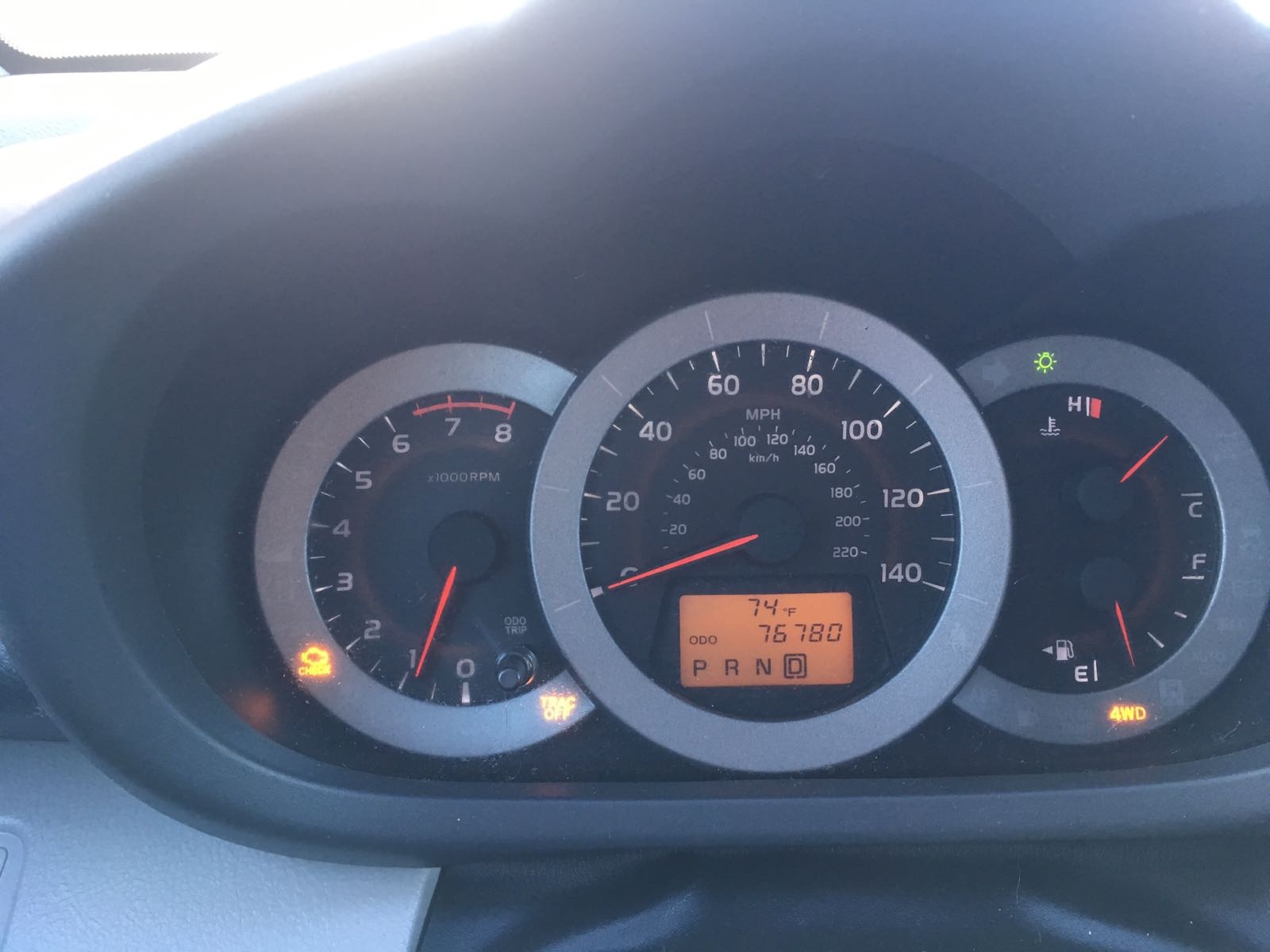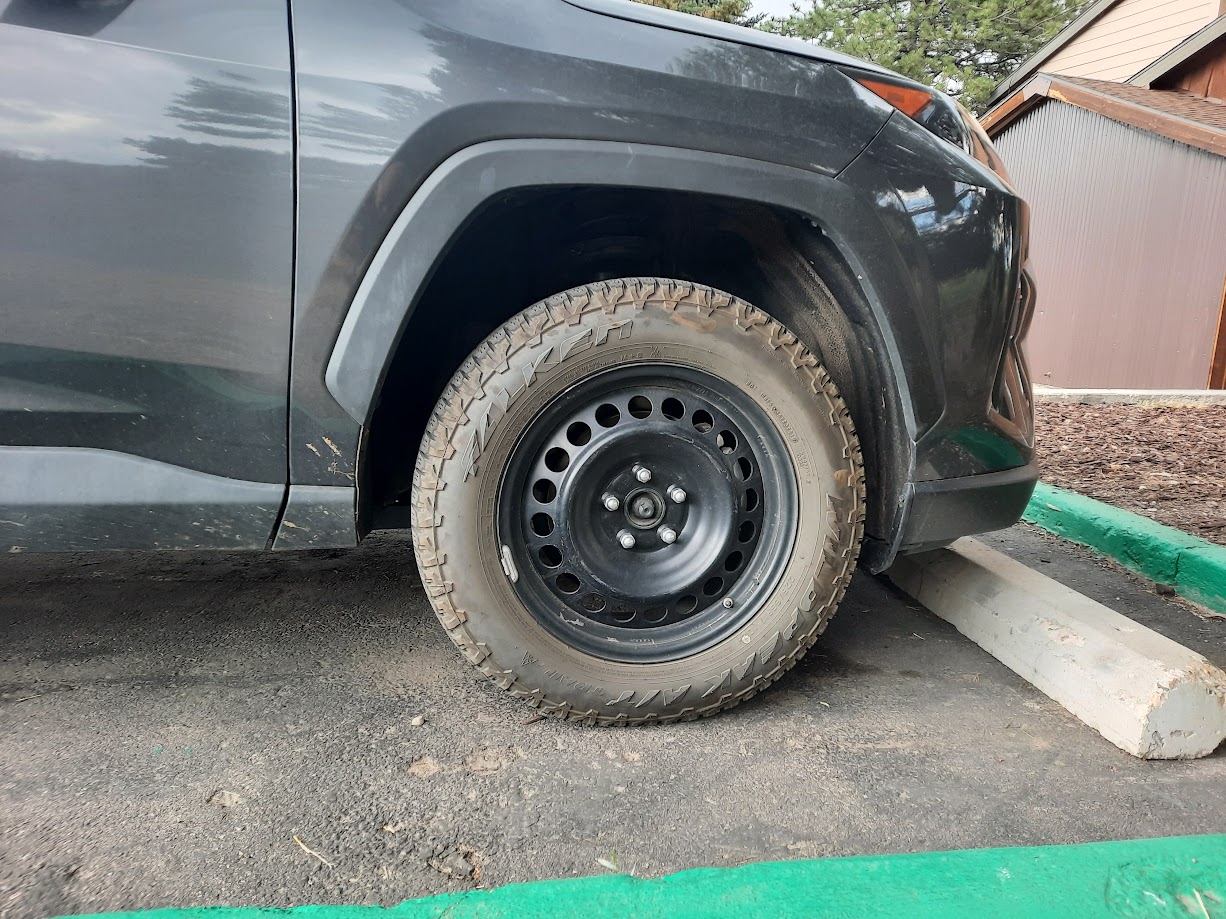How To Turn Off 4wd Light On Rav4
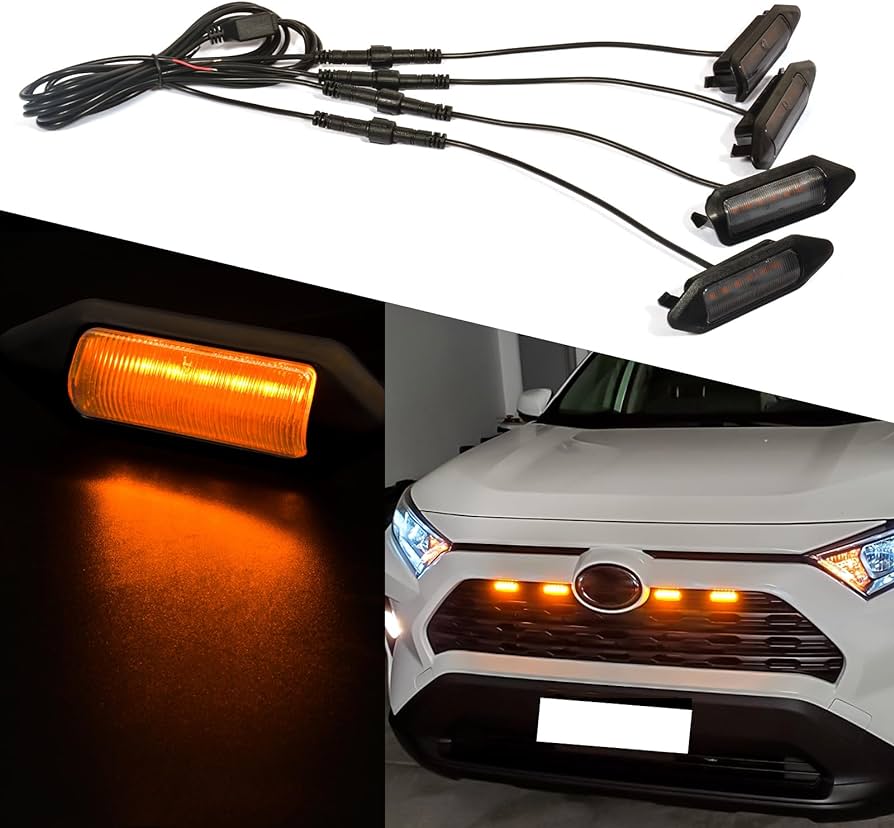
Imagine this: You're cruising down a sun-drenched highway in your trusty Toyota RAV4, the windows down, the wind in your hair. Suddenly, a bright light illuminates on your dashboard – the dreaded 4WD indicator. It's a little unsettling, isn't it? It makes you wonder if something is amiss with your vehicle's all-wheel-drive system.
Turning off that 4WD light on your RAV4 can be simpler than you think. In most cases, it's a matter of understanding how your vehicle's system operates, checking a few key components, and performing a reset procedure. While sometimes it indicates a genuine issue that requires professional attention, often it’s something you can address yourself, saving you time and money.
Understanding Your RAV4's 4WD System
The Toyota RAV4, particularly models with 4WD, uses a system designed to improve traction and stability in various driving conditions. This can range from slippery roads to light off-road terrain. These systems engage automatically when they sense a loss of traction, distributing power to all four wheels.
How the System Works
The 4WD system relies on sensors, actuators, and a control module to function effectively. Sensors monitor wheel speed, steering angle, and other parameters to detect when additional traction is needed. The control module then activates the appropriate actuators to engage the rear differential, transferring power to the rear wheels.
Some RAV4 models come with a 4WD lock feature that forces the system to stay engaged at lower speeds. This is helpful when you require maximum traction. Once you exceed a certain speed, the system typically reverts to automatic mode.
Common Reasons for the 4WD Light
The 4WD light can illuminate for a variety of reasons, some more serious than others. It’s important to distinguish between temporary activation and a persistent warning.
One frequent cause is simply the engagement of the 4WD system itself. This can happen automatically in slippery conditions, especially on older RAV4 models. If the light stays on even after conditions improve, it suggests a different issue.
A malfunctioning sensor is another possible culprit. A faulty wheel speed sensor, for instance, can send incorrect data to the control module, causing the 4WD system to engage unnecessarily. This can also trigger the warning light.
Low tire pressure, particularly if the tires are unevenly inflated, can also confuse the system. The difference in wheel speed between axles might be interpreted as a loss of traction. An electrical issue, such as a loose connection or a damaged wire, might also cause the light to come on.
Finally, a more serious mechanical problem within the 4WD system itself, such as a failing differential or transfer case, could be the cause. This is less common, but it requires immediate attention from a qualified mechanic.
Troubleshooting the 4WD Light
Before rushing to the mechanic, there are several steps you can take to diagnose and potentially resolve the issue yourself.
Initial Checks
First, ensure your tires are properly inflated and that the pressure is uniform across all four tires. Check your tire pressure against the specifications listed on the sticker inside your driver's side door.
Next, confirm that the 4WD lock function is not engaged. If your RAV4 has this feature, make sure it’s set to automatic mode. You can usually do this through a button or switch near the gear shifter.
Finally, try turning the engine off and then on again. This simple reset can sometimes clear temporary glitches in the system.
Resetting the 4WD System
Sometimes, a simple reset of the system can turn off the 4WD light. One common method involves disconnecting the negative terminal of the battery for about 15 minutes. This clears the vehicle's computer memory and can resolve minor software glitches.
After reconnecting the battery, start the engine and drive the vehicle for a short distance. The 4WD light may initially remain on, but should turn off if the underlying issue has been resolved. Note that this method will also reset your radio presets and other vehicle settings.
Another method involves using an OBD-II scanner to read and clear any diagnostic trouble codes (DTCs) related to the 4WD system. These scanners are widely available and relatively inexpensive. They connect to your vehicle's diagnostic port and display any stored error codes.
If the scanner identifies a specific sensor or component as faulty, you can research potential fixes online or consult with a mechanic. Clearing the codes may temporarily turn off the light, but if the underlying problem persists, it will likely reappear.
When to Seek Professional Help
If you've tried the above troubleshooting steps and the 4WD light remains stubbornly illuminated, it’s time to consult with a qualified mechanic.
Persistent warning lights, especially those accompanied by unusual noises or changes in driving performance, can indicate a more serious problem. Ignoring these issues can lead to further damage and potentially compromise your safety.
A mechanic can use specialized diagnostic tools to pinpoint the exact cause of the problem and recommend appropriate repairs. This might involve replacing a faulty sensor, repairing damaged wiring, or addressing a mechanical issue within the 4WD system.
It’s important to choose a mechanic who is experienced with Toyota vehicles and familiar with 4WD systems. A reputable shop will provide a clear explanation of the problem and a detailed estimate of the repair costs before proceeding.
Preventative Maintenance
Maintaining your RAV4's 4WD system is crucial for preventing problems and ensuring its longevity. Regular servicing, including fluid checks and inspections, can help identify potential issues before they escalate.
Consult your owner's manual for recommended maintenance intervals for the 4WD system. This typically includes changing the differential fluid and inspecting the transfer case. Keeping your tires properly inflated and aligned is also essential for the health of the 4WD system.
Avoid driving aggressively in 4WD mode on dry pavement, as this can put unnecessary stress on the system. The 4WD system is designed for slippery or low-traction surfaces, and prolonged use on dry roads can lead to premature wear and tear.
A Smooth Ride Ahead
The appearance of a 4WD light on your Toyota RAV4 doesn't necessarily spell disaster. In many cases, it’s a minor issue that can be easily resolved with a few simple checks and a bit of troubleshooting. Understanding how your vehicle's system operates, and following the steps outlined in this guide, can empower you to address the problem yourself, or at least make an informed decision when seeking professional help.
Remember to prioritize safety and always consult with a qualified mechanic if you are unsure about any aspect of your vehicle's maintenance or repair. With proper care and attention, your RAV4's 4WD system will continue to provide you with years of reliable performance, allowing you to confidently tackle any road ahead. Happy driving!

